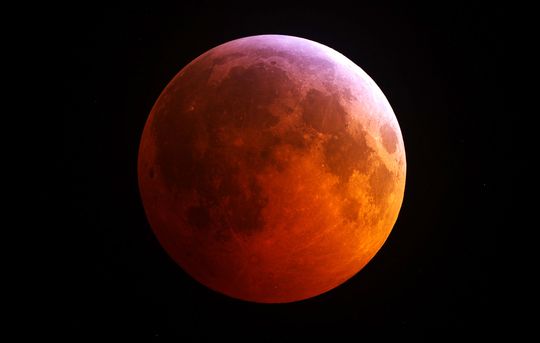
Skywatchers are in for a double treat on Sunday night.
The moon will appear larger and brighter than usual — a so-called supermoon. The Earth’s shadow also will obscure the moon for part of the evening, creating a reddish-orange glow during the lunar eclipse.
What’s the best time to see all this?
Here are viewing tips from Adam Block, who works at Steward Observatory in the University of Arizona’s Department of Astronomy in Tucson:
When does the eclipse happen?
The beginning of the lunar eclipse should be noticeable around 8 p.m. Arizona time (10 p.m. ET), when the lower edge of the moon will appear dark or “dirty.”
“It will look a bit funny,” Block said.
The Earth’s shadow will continue to encroach across the moon after 8 p.m.
Maximum eclipse, when the moon is fully covered, will last about an hour, from 9:40 p.m. to 10:40 p.m. Arizona time (11:40 p.m. to 12:40 a.m. ET).
Block predicts the moon at maximum eclipse won’t get completely dark but will take on a ruddy, orange-red color. It’s sometimes referred to as a “blood moon,” even though it’s more orange than red.
“It’s a weird thing, but it’s pretty cool,” he said.
Impress your fellow skywatchers with these actually interesting eclipse facts.
What’s a supermoon?
Supermoons get their name because they are up to 14 percent larger and 30 percent brighter than typical full moons and only occur when a full moon is closest to Earth in its orbit.
Supermoons happen a couple of times a year. But this is the only time during 2019 that you will see a supermoon coupled with a total lunar eclipse.
Do you need telescope or binoculars?
Special equipment isn’t needed. Just step outside and check out the moon.
However, if you do have a small telescope, you may want to set it up and check out the moon during maximum eclipse. A lunar eclipse dims the full moon, which otherwise would appear very bright under a telescope.
What’s the best way to take photos?
Block said even a small digital camera set on a tripod should yield good photos of the orange-colored moon. Use a zoom lens to get in closer.
If you have some time, set up a tripod and take a series of pictures, creating a timelapse.
Get away from city lights, if you can
You can see the lunar eclipse fine if you live in a city.
But if you can get away from city lights, you’ll get the bonus of seeing a lot of stars as well.
Best viewing will be the hour-long period from 9:40 p.m. to 10:40 p.m. Arizona time when the moon is dim.





























